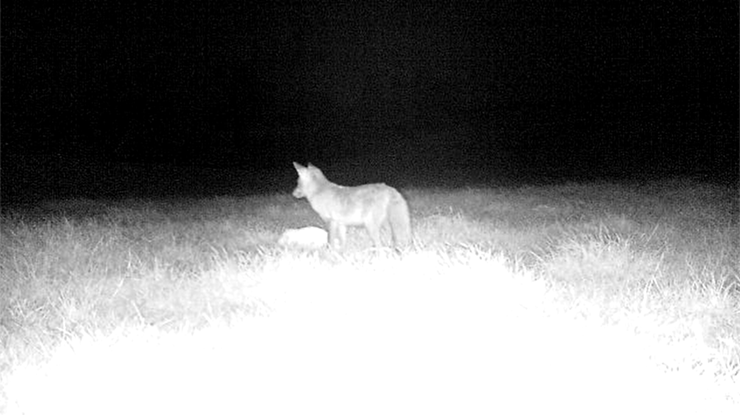 Foxes are the main predator for the region.
Foxes are the main predator for the region.
The $56,000 payoff from better predator control
No stone was left unturned during a recent Producer Demonstration Site (PDS) in north-east Victoria, where producers turned their attention to improved predator management to improve lamb survival.
‘Less predators, more lambs’ PDS coordinator Dr Matt Mahoney from Agridome Consultancy said varied land ownership meant that predator management made it a challenge to coordinate between neighbours.
During the three-year project, eight commercial producers looked closely at the impact of predators – largely foxes – were having on lamb survival.
“First, we made sure ewe management was best practice to ensure lamb survival was strengthened on other fronts. We looked at everything from reproductive diseases to ewe condition management, including key principles from the lifetime ewe management course.
“The producers were already following best practice, including some of the methods being demonstrated as part of the PDS. This meant it would be a terrific result if lamb survival was improved by only a fraction,” Matt said.
While predator numbers are almost impossible to quantify at any point, historical lamb survival figures were used as a baseline.
“The local vets did autopsies to confirm the cause of death, and we would collect the figures to see which lambs were victims of predation,” Matt said.
Of the 44 lambs autopsied by the vets, 18% died from primary predation.
Eliminating predators during the lambing period
As part of the PDS, each property developed their own specific predator control management program to implement, including a baiting strategy.
“Six to eight weeks prior to lambing is when we wanted producers to focus on that strategy to reduce predator numbers leading into that lambing period,” Matt said.
Producers were also asked to utilise the FeralScan app to obtain and report data on predator sightings, control points such as information on bait-take/replacement, and to measure the success of baiting sites.
“While results varied between years and properties, we observed a 21% increase in lamb survival on one property in the second year of the project.”
Across the entirety of the properties over the three years, the lamb survival increased on average by 2%, which despite being a conservative figure, Matt said would make a significant impact.
“This alone equated to increased income of around $56,000/farm/year for extra lambs sold. This becomes quite substantial for those producers seeing a lamb survival increase of more than 20%,” Matt said.
Action on the ground
Producer Ben Brabazon, located near Mansfield, was one of the eight PDS core host participants.
For him, a lack of coordinated management from properties in the area meant fox activity was often high and difficult to control.
“A lot of foxes were coming through in the direction where neighbours weren’t baiting, so the baiting strategy we were given was to overcome that,” Ben said.
Ben and his colleagues laid baits on their southern fence line, with the goal to stop the foxes before they could come in.
“I learned in the PDS that while we were baiting, we probably weren’t putting them in the right places, which is something we’ve improved on since,” Ben said.
“We saw our lambing survival percentages go up. It depends on the year, but it lifted at least 3%, so we found we did have more lambs on the ground.
“Being involved in the PDS was a great experience, especially meeting others who are going through the same challenges as you. You can also pick up different ideas about how to run and better your production,” Ben said.
Matt said that going forward, consistency is the biggest priority.
“Predator management is successful if you don’t let your guard down. There’s a constant threat to take advantage of any easy meal…which reduces productivity not only for the current year, but every year following.”



